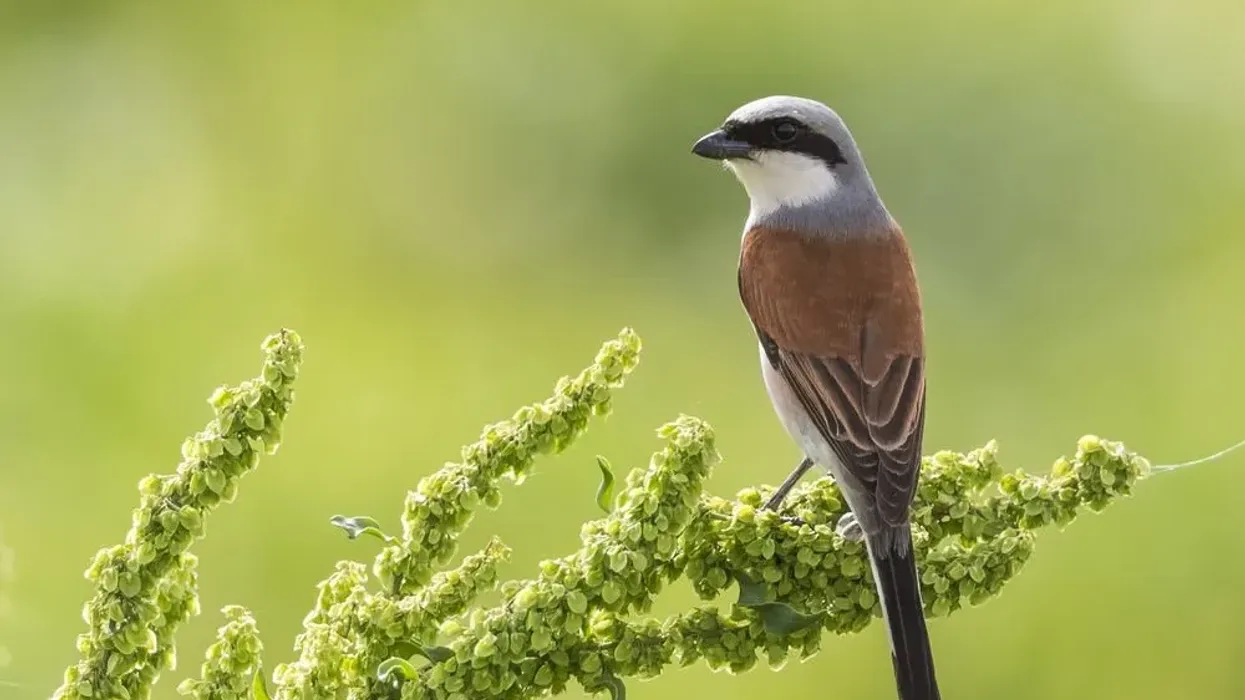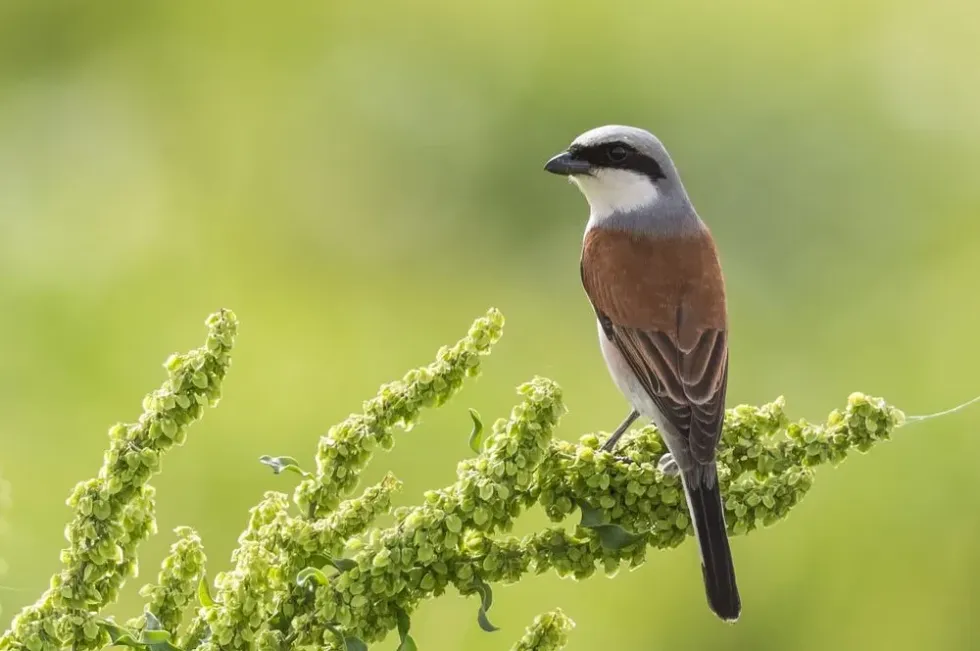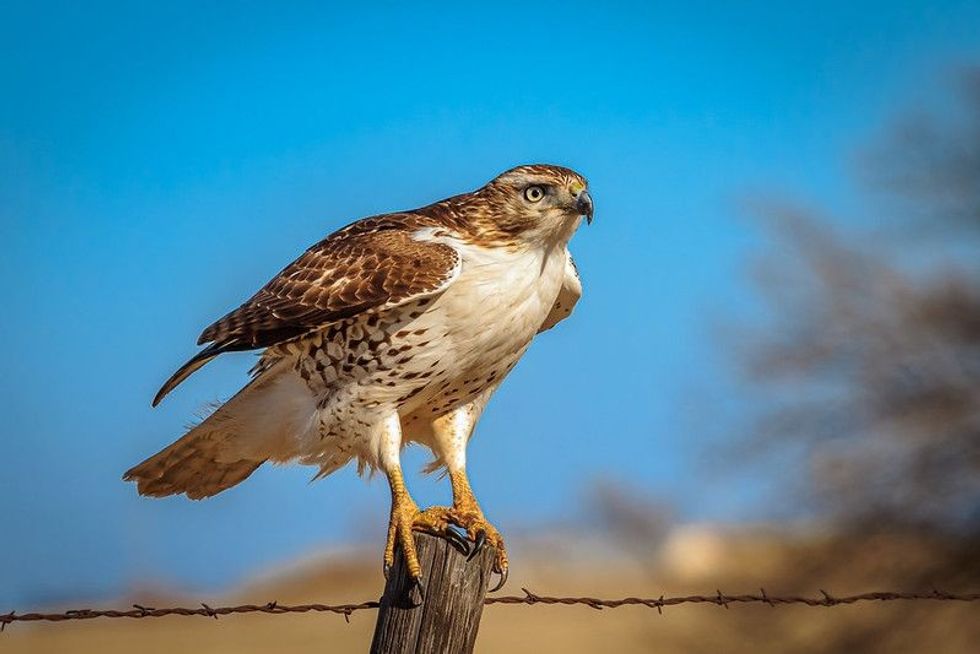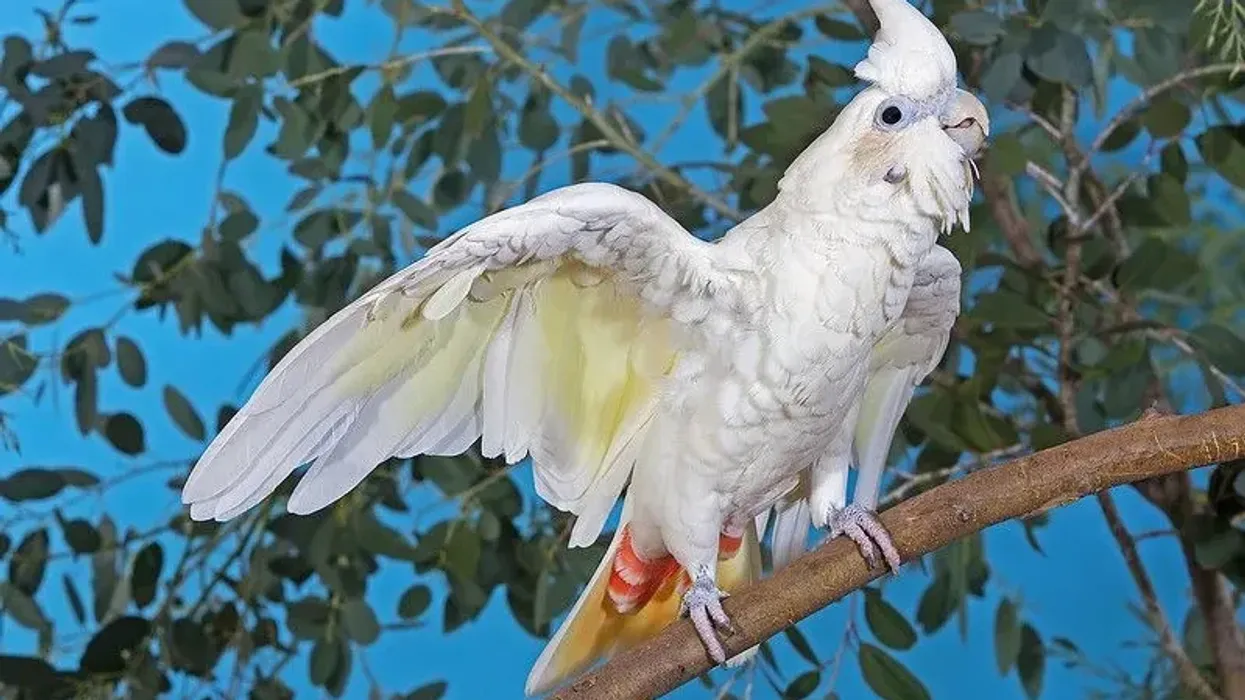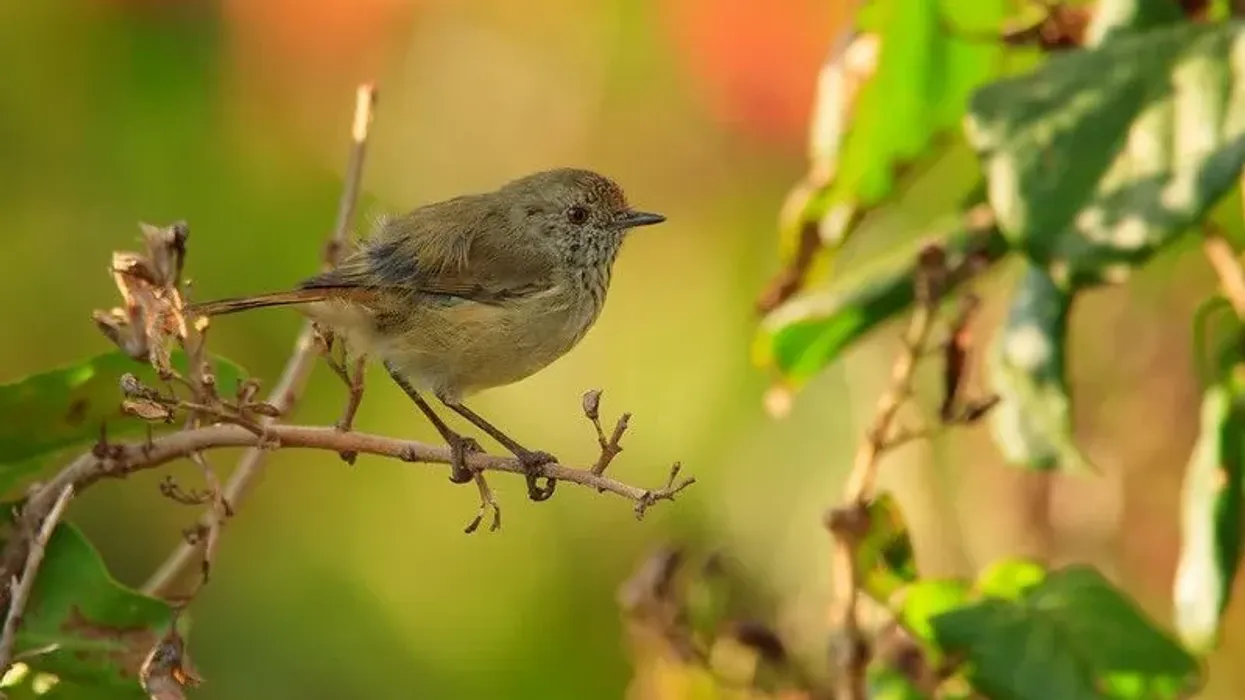The red-backed shrike is a beauty to behold. This bird is a passerine - its body is similar to a sparrow and it also has a special arrangement of its toes, with three of them pointing forward and one pointing backward. This typical arrangement helps them in perching the tree branches well.
This little bird is also called the ‘butcher bird’, perfect for its feeding habits. The bird is also known for its high-pitched call, and for imitating other bird calls.
This little bird has three subspecies, Lanius collurio which is present almost everywhere, the L.C. Kobylini which looks duller and has a darker shade of grey feathers on its head, and the L.C. Pallidifrons, who have a paler hindneck and crown.
If you like this article, check out the shoebill and the golden pheasant.
Red-Backed Shrike Interesting Facts
What type of animal is a Red-Backed Shrike?
Red-backed shrikes are a type of bird.
What class of animal does a Red-Backed Shrike belong to?
The butcher bird belongs to the category of birds, or class Aves.
How many Red-Backed Shrikes are there in the world?
The exact count is unknown, however, a rough estimate between 20-48 million birds of this species has been made.
Where does a Red-Backed Shrike live?
These small birds prefer living in tropical forests. They are also found in savannas, mountains, and grasslands.
What is a Red-Backed Shrike's habitat?
Be it woodland clearings or olive groves, heathlands or farmlands, sparsely vegetated regions to dense forests, this species breeds in almost all sorts of habitats. Sometimes, they are also found in mountain regions and savannahs.
The red-backed shrikes look for areas that have high hunting posts. These in turn would offer good visibility over bare land, or over small short pastures.
This would make it easy for them to spot small prey and get hold of them. Upon finding a good spot, it rests until it finds a good prey and hunts from these prominent perches.
Who do Red-Backed Shrikes live with?
These birds prefer living in small groups.
How long does a Red-Backed Shrike live?
The red-backed shrike lifespan extends from three to five years
How do they reproduce?
You will find the red-backed shrikes breeding mainly in the spring season, usually between the months of May and July. Usually, a single brood is produced in a year, but there might be a chance of another one too, though this is very rare.
The female bird lays about four to six eggs in her nest, which usually have small brown marks on them. The incubation period extends up to two weeks, during which the female stays with her eggs all the while.
Once the red-backed shrike babies are ready, they hatch from their eggs.
The mother bird takes good care of her little ones, and the father bird usually makes arrangements for food. The wings of the little one begin developing after two weeks, but in situations of bad weather, it may take around three weeks.
What is their conservation status?
The conservation status of these small birds is of Least Concern.
Red-Backed Shrike Fun Facts
What do Red-Backed Shrikes look like?

The red-backed shrikes are strikingly similar to the house sparrow, though slightly larger and thinner. The red-backed shrike's wingspan is about 9.84-13.78 in (25-35 cm) long and this bird is about 6.3–7.1 in (16–18 cm ) tall.
These birds have a black stripe passing through their eyes, and sharp black beaks. Their eyes and feet are dark brown in color.
The male of this species has a blue-grey head and a bright red-chestnut tint on their backs. The underparts of the bird are of soft pink color, and the tail has black-white patterns.
However, the female and the younger birds have slightly browner backs and are vermiculated.
How cute are they?
We find them cute because of their small size and colorful body!
How do they communicate?
These birds often communicate with each other in high-pitched calls. This call is usually a hard ‘shak’, or a ‘shak shak’ sound. Occasionally, it might also go ‘churuk churuk’. In situations of alarm, the shrike alarmingly starts chirping in ‘kek-kek-kek’ notes.
Its warbling voice is much softer and more melodious. Sometimes, these birds even mimic the calls of other passerines.
How big is a Red-Backed Shrike?
The average size of red-backed shrike is equal to the size of an adult's palm, starting from the tip of the middle finger to the base of the palm.
How fast can a Red-Backed Shrike fly?
The exact speed of this bird is unknown. However, as its size and body are similar to that of a house sparrow, we can estimate its speed to be around 28-31 mph (46-50 kph).
How much does a Red-Backed Shrike weigh?
A red-backed Shrike weighs very little, ranging between 25-35 g.
What are their male and female names of the species?
We could not find a definite name for both genders of this species. However, a female bird is often referred to as the hen, and a male bird is called a cock.
What would you call a baby Red-Backed Shrike?
Unfortunately, we did not come across any name for a baby red-backed shrike. Nonetheless, a baby bird is usually termed as a hatchling or a chick.
What do they eat?
The red-backed shrike's diet includes small birds, large insects, frogs, rodents, and even small reptiles!
Are they dangerous?
Since they mainly attack small prey, they are not really dangerous to humans.
Would they make a good pet?
We don't really think these carnivorous birds would make a good pet, as you would not want to see little insects being brutally munched on, and they rely on the freedom of the wild so they ought not to be kept as pets.
Did you know...
These birds build cup-shaped nests in small trees or in dense bushes. These nests are made with roots, grass, plant stems, lichen, and other available plant material. The inside of the nest has a soft lining of moss, grass, and fur, making it super comfortable for the little eggs.
Additionally, these birds are monogamous and are often aggressive if another bird comes to woo their mate.
The Red-Backed Shrike's survival techniques
These birds are easily preyed on, especially when they are migrating as they travel slowly and have a straight flight. Thus, these little carnivorous shrikes glide and zoom past corners and hedges when they are alone or in small groups. This makes it difficult for other predators such as eagles or falcons to catch them.
To ensure no other birds establish their territory in their region, they chirp and make loud calls, and would peck anything they feel is of any sort of threat.
These birds are also good at mimicking the calls of other birds and hence would trick other animals with this little talent.
Why are they called 'Butcher Birds'?
This little carnivore is popularly known as the ‘butcher bird’.
The Red-backed shrike has a sharp bill that resembles that of a hawk. Also, just like a hawk, these birds sometimes fly with their prey in their clutches.
Also, they choose habitats that have thorny tree branches, or even barbed wires. This tiny bird spikes its freshly caught prey mercilessly on these spiky structures, in turn impaling its food just like a larder.
In fact, the genus name of this bird, Lanius, comes from the Latin term for ‘butcher’. If their prey is big, they directly swoop down from the tree and kill the animal with a direct sharp peck at the back of its prey's head.
Here at Kidadl, we have carefully created lots of interesting family-friendly animal facts for everyone to discover! Learn more about some other birds including the frigatebird and the southern cassowary.
You can even occupy yourself at home by drawing one of our Red-backed shrike coloring pages.

